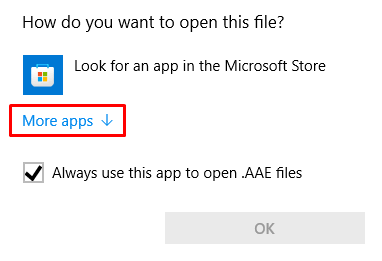Understanding and Opening AAE Files on Windows: A Comprehensive Guide
You are not the only person who has ever been perplexed by an email attachment that has an AAE file extension. AAE files may appear mysterious, but do not worry. This thorough guide will reveal their mysteries, assisting you in both opening them and understanding their intent.
**Unveiling AAE Files: Origins and Significance**
Apple Aperture Edits is what the mysterious acronym "AAE" stands for. On any Apple device, these files appear whenever you make changes to an image. An AAE file is essentially an expression of Extensive Markup Language (XML), acting as a store for all image modifications. It encapsulates metadata, chronicling the entirety of changes implemented during the editing procedure. Importantly, AAE files find their haven in a multitude of modern Apple devices, spanning from iPhones to MacBooks.
**Restoration of Edits: The Core Function of AAE Files**
In the times of yore, prior iterations of iPhones followed a copy-edit approach, where editing transpired on a duplicate of the original photo. This safeguarded the initial file but eliminated the prospect of reverting changes. However, the advent of AAE files transformed the narrative. By encapsulating edits within XML, these files empower devices to undo image alterations effectively.
**Navigating the Windows Conundrum: Opening AAE Files**
Lamentably, Windows systems balk at the sight of AAE files, flinching away with an error message. But don't despair; there's a workaround. AAE files are, at their core, repositories of XML code detailing image edits. Fortunately, source-code editors like Notepad++ or VS Code come to the rescue, seamlessly unveiling the contents of AAE files. Even humble Notepad or other text editors can serve this purpose. Here's how:
1. Transfer the AAE file to your Windows PC.
2. Right-click on the file and select "Open With."
3. Opt for an appropriate app, such as Notepad.
4. Voila! Witness the XML code that governs image modifications.
However, remember, this won't display the edited image. Opening the XML file mainly serves those interested in tinkering with the code itself. For most users, the AAE file remains a background player, orchestrated by the Apple Photos app.
**The Inseparability of AAE and Image Files**
An attempt to metamorphose an AAE file into a JPEG or JPG counterpart is a fruitless endeavor. The AAE file, it's vital to comprehend, is not the image itself; it's a repository of tweak data—contrasts, saturations, brightness, and exposures. The genuine image, the one you snapped with your iOS device, is the true visual entity that can be opened and observed.
**Gazing Upon the Image: Unveiling the Original File**
To bask in the glory of the unaltered image, accompanied by its faithful AAE companion, USB intervention is required. Link your iPhone or iPad to your PC, initiate the file transfer, and witness the seamless conversion of HEIC files to the JPEG format, readily digestible by Windows.
**Harnessing the Cloud: Google Drive as a Medium**
Should physical connections prove irksome, the cloud offers a haven. By uploading your images to Google Drive or Dropbox, you can access them from any device, obliterating the need for wired interaction.
**The Dilemma of Deletion: To Keep or Not to Keep AAE Files**
AAE files are more than mere namesakes; they hold the key to unlocking your image's edited versions. The AAE file's moniker must mirror that of its associated image for the magic to unfold. Deleting the AAE file risks erasing the entire chronicle of edits, a fate best avoided after arduous editing endeavors.
**Vigilance and Antivirus: Safeguarding AAE Files**
While AAE files per se aren't nefarious, vigilance is warranted. Infected devices could potentially compromise AAE files, resulting in a less-than-savory outcome. Thus, an antivirus guardian stands as a bulwark, safeguarding your AAE-laden treasures.
In conclusion, AAE files, while enigmatic, are integral to the Apple editing experience. Unveiling their contents and reaping their benefits can be achieved with a little know-how and guidance. By deciphering their essence and functionality, you're better equipped to navigate the realm of digital image editing.





